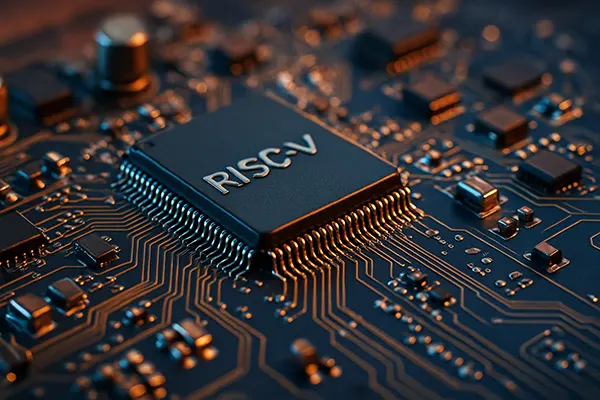RISC-V: The Open Processor Architecture Transforming the Industry

RISC-V has rapidly emerged as a revolutionary force in the processor industry, challenging long-standing proprietary architectures. As an open standard instruction set architecture (ISA), it offers a flexible and cost-efficient framework for designing chips, reshaping how companies and researchers innovate in computing hardware. By 2025, its influence spans consumer electronics, data centres, automotive systems, and AI applications.
Origins and Core Principles of RISC-V
The RISC-V architecture originated at the University of California, Berkeley, as an academic initiative aimed at creating a simplified and efficient ISA. It was officially introduced in 2010 and has since evolved into a globally adopted standard. Unlike proprietary ISAs, RISC-V is open and royalty-free, which significantly lowers barriers for new entrants in the semiconductor sector.
The design philosophy of RISC-V follows the Reduced Instruction Set Computer (RISC) model. This approach streamlines the instruction set, resulting in higher efficiency, lower power consumption, and simplified processor design. Such characteristics are particularly valuable for embedded systems and edge computing devices.
Over the years, the RISC-V Foundation (now RISC-V International) has nurtured a collaborative ecosystem. This community-driven development ensures that RISC-V remains transparent, flexible, and continuously evolving to meet modern technological demands.
Early Adoption and Growth
Initial adoption of RISC-V was mainly seen in academic projects and start-ups, which leveraged its open nature to prototype innovative chip designs. The absence of licensing fees enabled experimentation without financial constraints, accelerating the pace of development.
By the early 2020s, several commercial entities began integrating RISC-V cores into microcontrollers, storage devices, and IoT hardware. This marked a significant transition from research use to large-scale industrial deployment, signalling growing confidence in its viability.
Today, numerous well-established companies have joined the RISC-V ecosystem, contributing resources and expertise. Their involvement has bolstered its credibility and positioned it as a competitive alternative to architectures like ARM and x86.
Applications and Industry Impact
RISC-V has seen widespread implementation across various sectors. In consumer electronics, it powers microcontrollers in wearables, smart home devices, and low-power gadgets. Its efficiency and scalability make it an appealing option for cost-sensitive products.
In the automotive industry, RISC-V cores are increasingly used in Advanced Driver Assistance Systems (ADAS), infotainment units, and vehicle control modules. The open nature of the ISA allows manufacturers to tailor designs to specific automotive safety and performance standards.
Additionally, data centres and AI infrastructure are beginning to embrace RISC-V-based accelerators. The ability to customise processors for specific workloads offers potential improvements in performance-per-watt and overall operational efficiency.
Collaboration and Ecosystem Development
The success of RISC-V has been driven by strong collaboration among industry leaders, academic institutions, and non-profit organisations. RISC-V International now counts hundreds of members worldwide, ranging from semiconductor giants to government agencies.
These collaborations foster standardisation while encouraging innovation. Shared development reduces duplication of effort and promotes the creation of robust toolchains, software libraries, and development environments compatible with RISC-V.
Moreover, national and regional initiatives, such as those in Europe, China, and India, are investing heavily in RISC-V to strengthen local semiconductor industries and reduce dependency on foreign technologies.

Future Prospects and Challenges
Looking ahead, RISC-V is poised to expand its presence in high-performance computing and mobile devices. Continuous improvements in core designs, compiler support, and security features are paving the way for more competitive performance levels.
However, RISC-V also faces challenges, including the need to mature its software ecosystem to match the extensive libraries and support enjoyed by established architectures. Ensuring robust security implementations across diverse hardware designs is another critical focus area.
Despite these hurdles, the momentum behind RISC-V continues to grow. With increasing industry investment and government backing, it is well-positioned to become a foundational technology for next-generation computing systems.
Strategic Importance in Global Technology
RISC-V’s open model aligns with the global push for technological sovereignty. Countries seeking to build independent semiconductor capabilities view it as a strategic asset, free from the licensing restrictions of proprietary architectures.
This geopolitical relevance has accelerated funding and collaboration, with several nations establishing RISC-V-based national chip design centres. These efforts aim to develop home-grown talent and reduce reliance on external intellectual property.
Ultimately, RISC-V represents more than just a technical innovation; it symbolises a shift towards open, collaborative development in an industry historically dominated by closed ecosystems. Its trajectory suggests a lasting influence on the future of computing.







